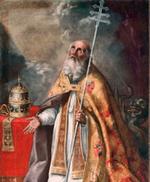Catholic Activity: Post-Midnight Mass Traditions
DIRECTIONS
Children love to sing and to light candles. They also love the ringing of bells, and they should be given every opportunity to do so with the arrival of the Saviour at midnight on Holy Night. In many churches the bells are rung during the solemn vigil which precedes the midnight Mass. In other places a concert of chimes and carillon music is rung from all the towers and steeples. There is a quaint medieval custom which is observed in some places in the British Isles. It is symbolic of the renewal of the life of grace which was brought about by the new Adam. One hour before midnight the big bell of the church begins to toll as if for a funeral. This continues for a whole hour, but at the stroke of twelve the joy of the world is expressed by a glorious ringing out of Christmas joy and redemption.
The temptation to speak of myriads of other interesting customs which solemnize the vigil is very great. Though a complete account here is impossible, it is our hope that these few suggestions may inflame the imagination of our American families and inspire them to go more deeply into the spiritual meaning and wealth of the Holy Night. Among the Slavic nations, for example, the small children are permitted by their parents to sleep on the floor in a bedding of hay and straw before the midnight Mass. While this practice is scarcely advisable in our own country — where so many have no access to a rural environment anyway — parents may wish to permit children to make some small sacrifice of comfort on this night of nights, in order to share in the humble circumstances of the Saviour's birth. After the midnight Mass, as they come home for the réveillon around the crib and the Christmas tree to receive their presents, their joy would be even greater, for they would have experienced some little reminder of the sufferings of the Christ Child. St. Gregory Nazianzen has vividly summarized this spirit of the Gospel and of St. Paul:
Let us be as Christ, for Christ is also as we. Let us become gods for His sake, for He also was made man for us. He took upon Himself what was poorer that He might give what was more glorious; He was made poor that we might be enriched by that poverty; He took the form of a servant that we might be set at liberty. He descended that we might be elevated. . . . Let everyone give all things; let him offer all things to Him who gave Himself as the price of redemption for us and as a recompense for our fault. But he can give nothing as great as when, rightly understanding this mystery he offers himself and becomes for the sake of Him everything which He has become for our sake. (Second nocturn of Easter Sunday.)
Activity Source: True Christmas Spirit by Rev. Edward J. Sutfin, Grail Publications, St. Meinrad, Indiana, 1955






